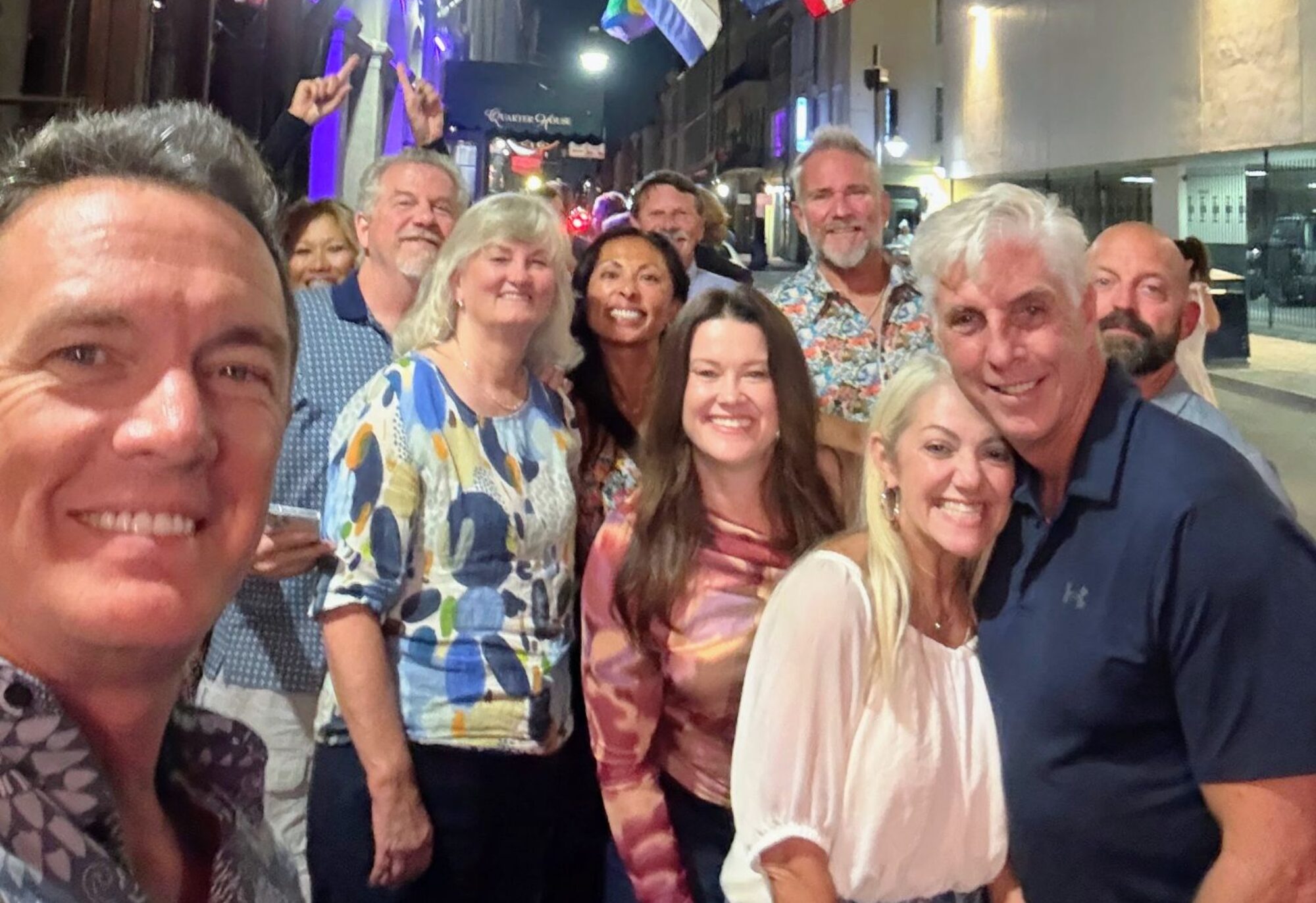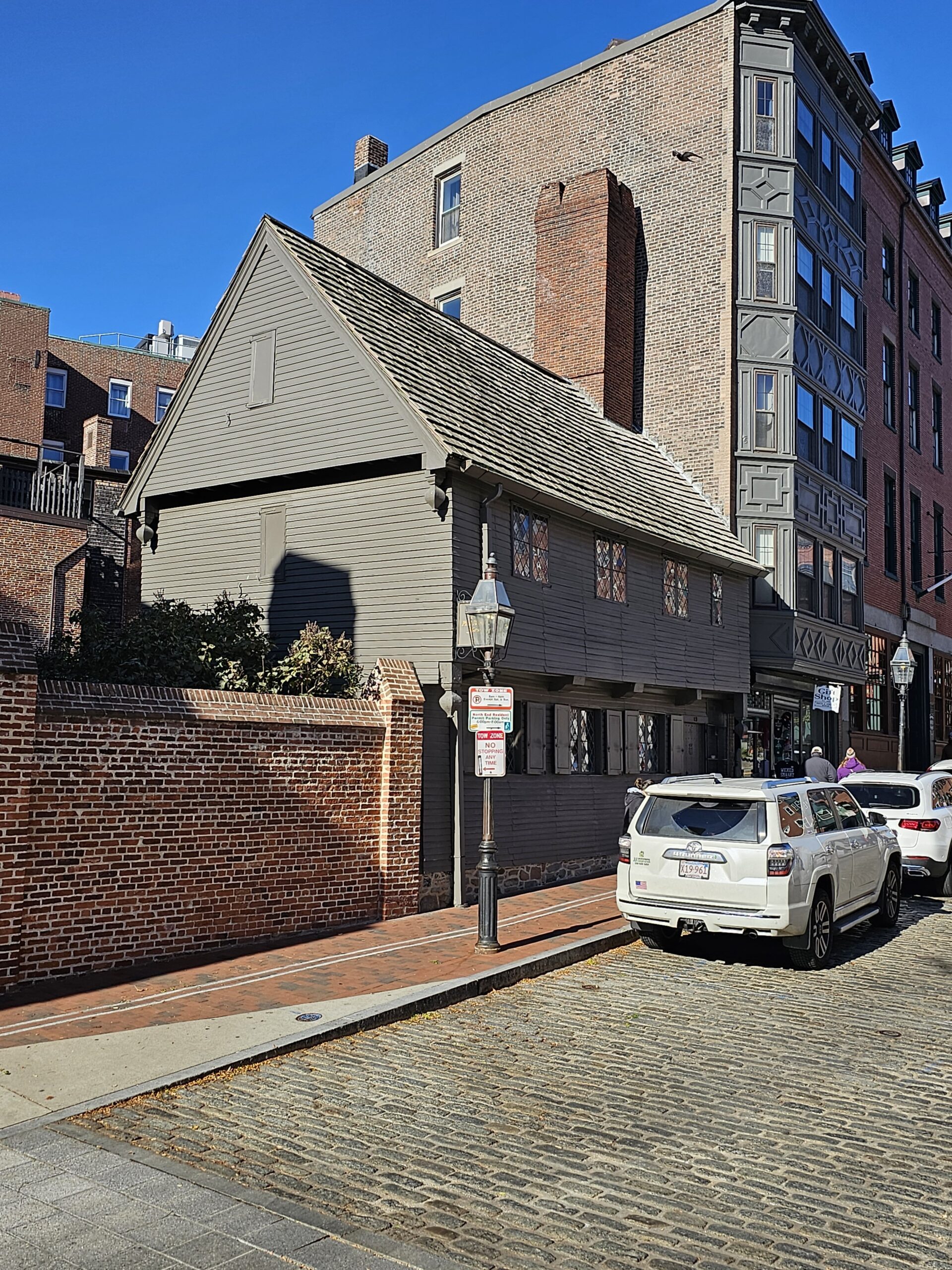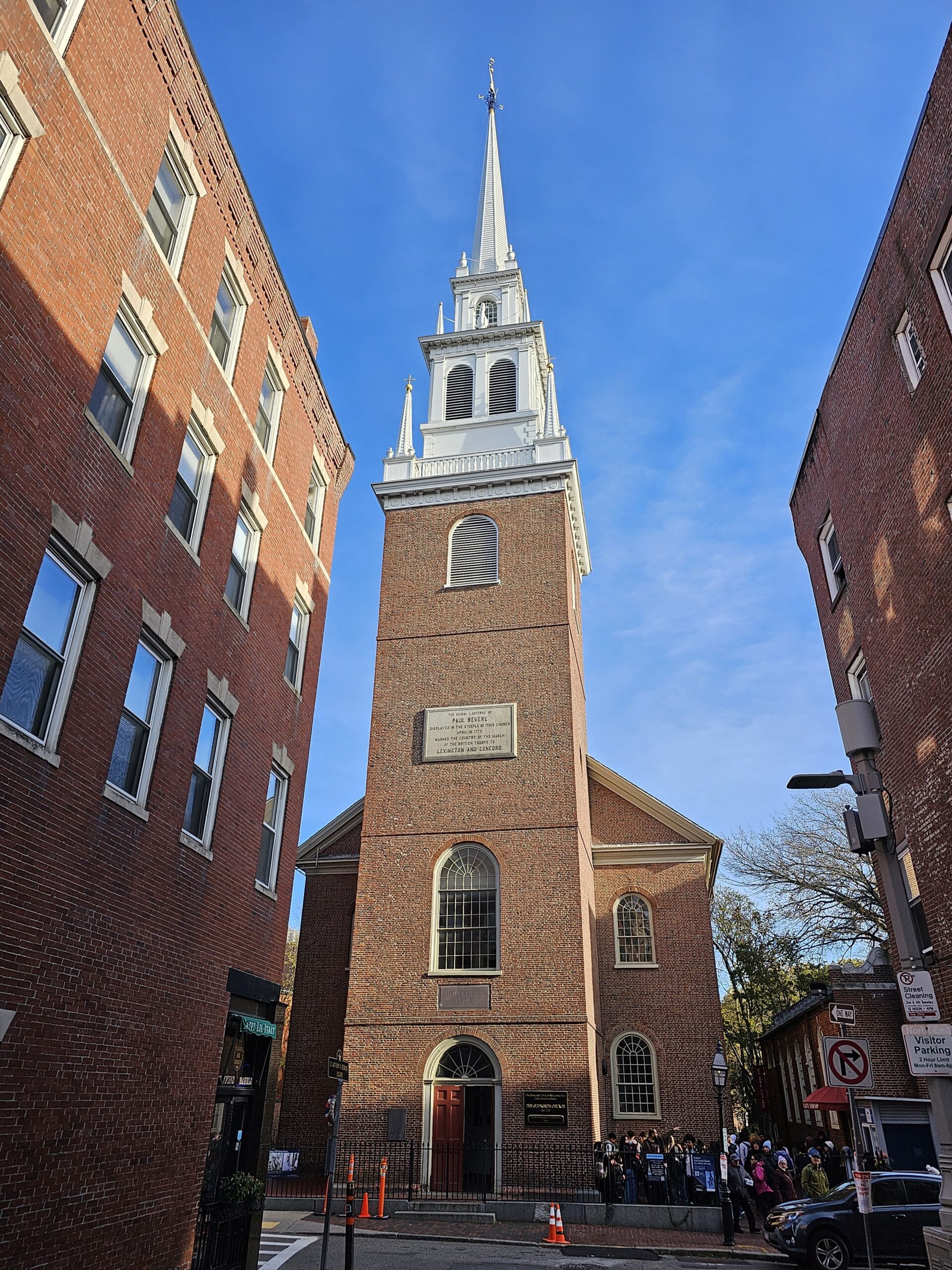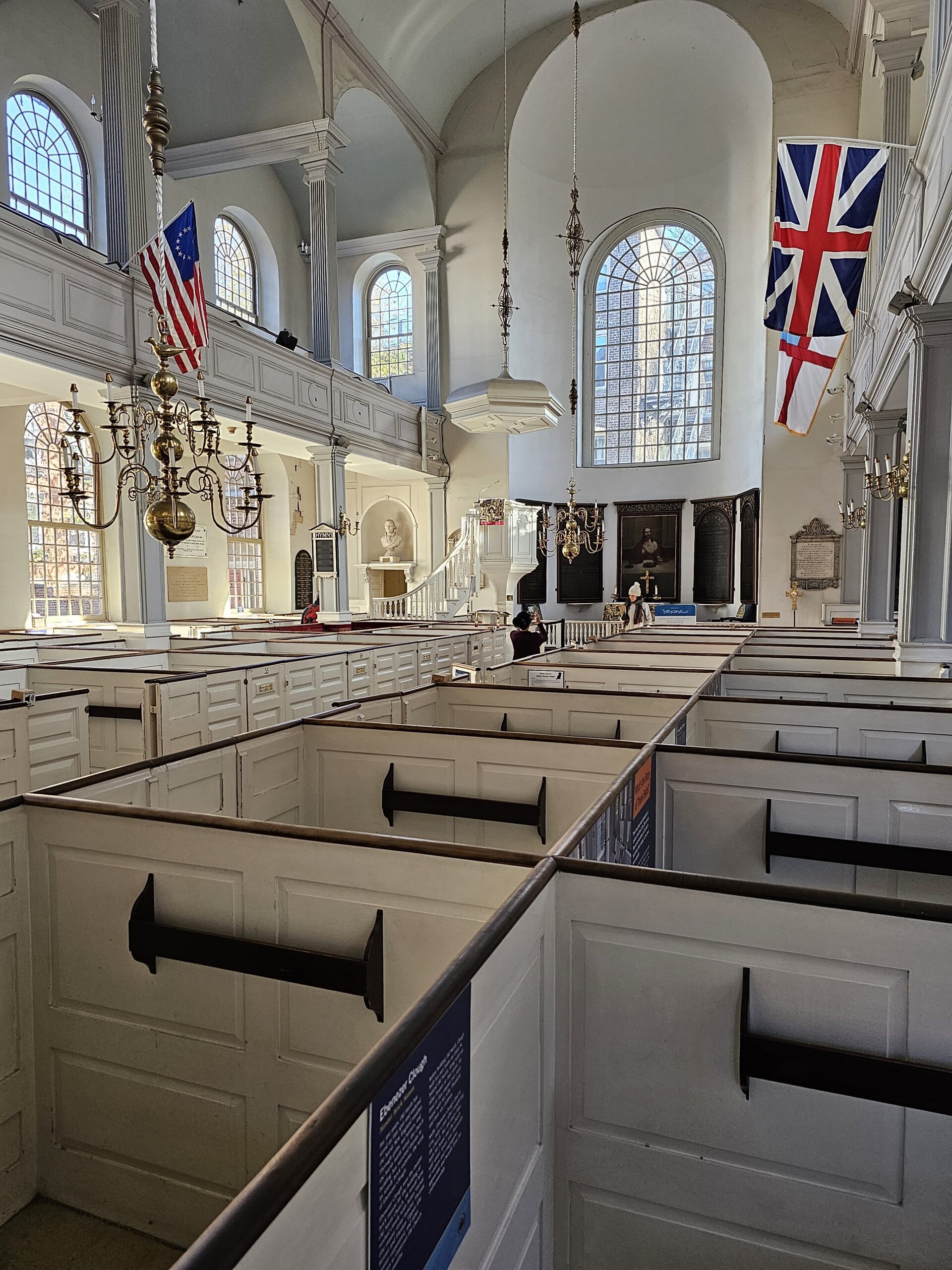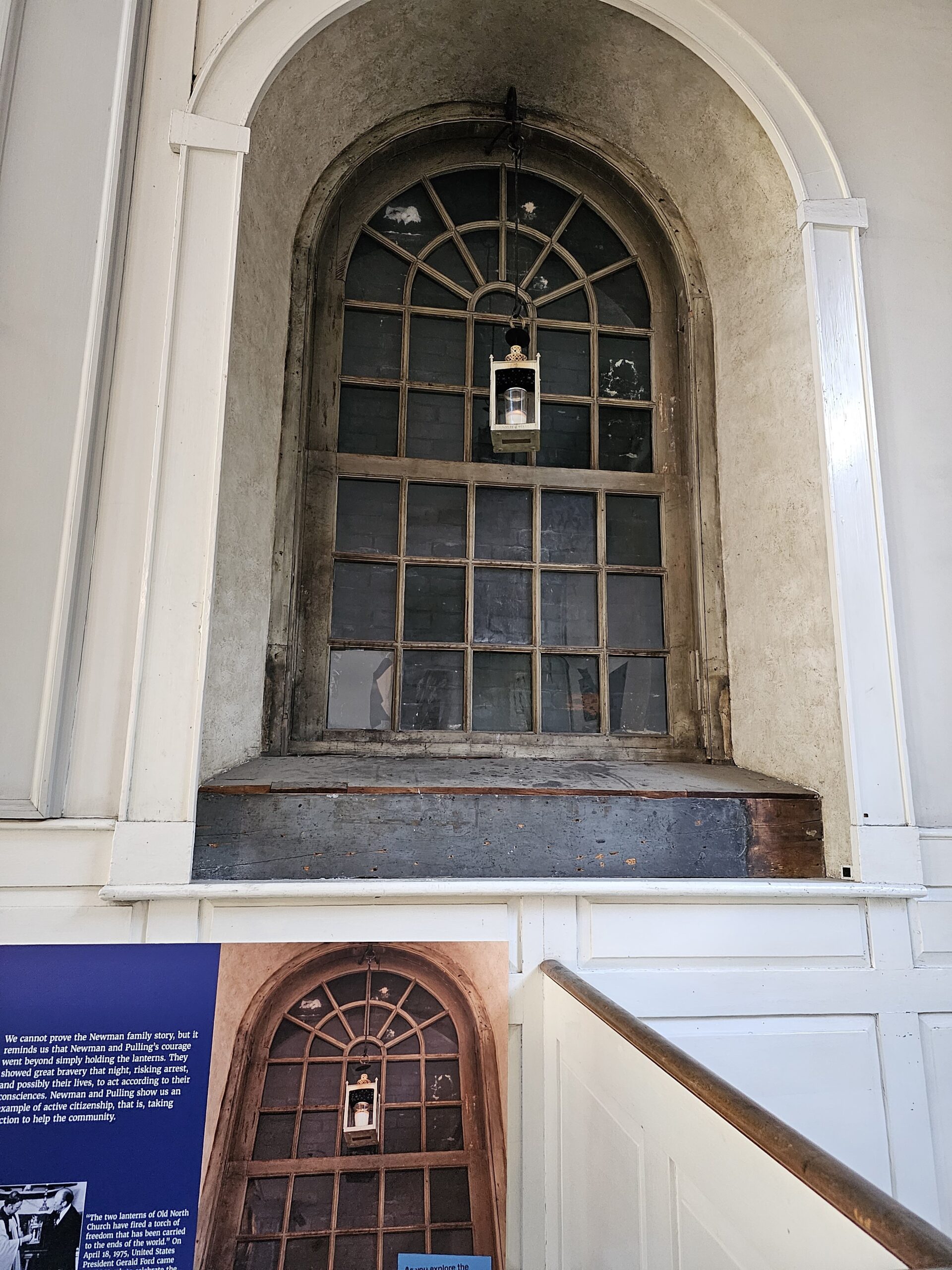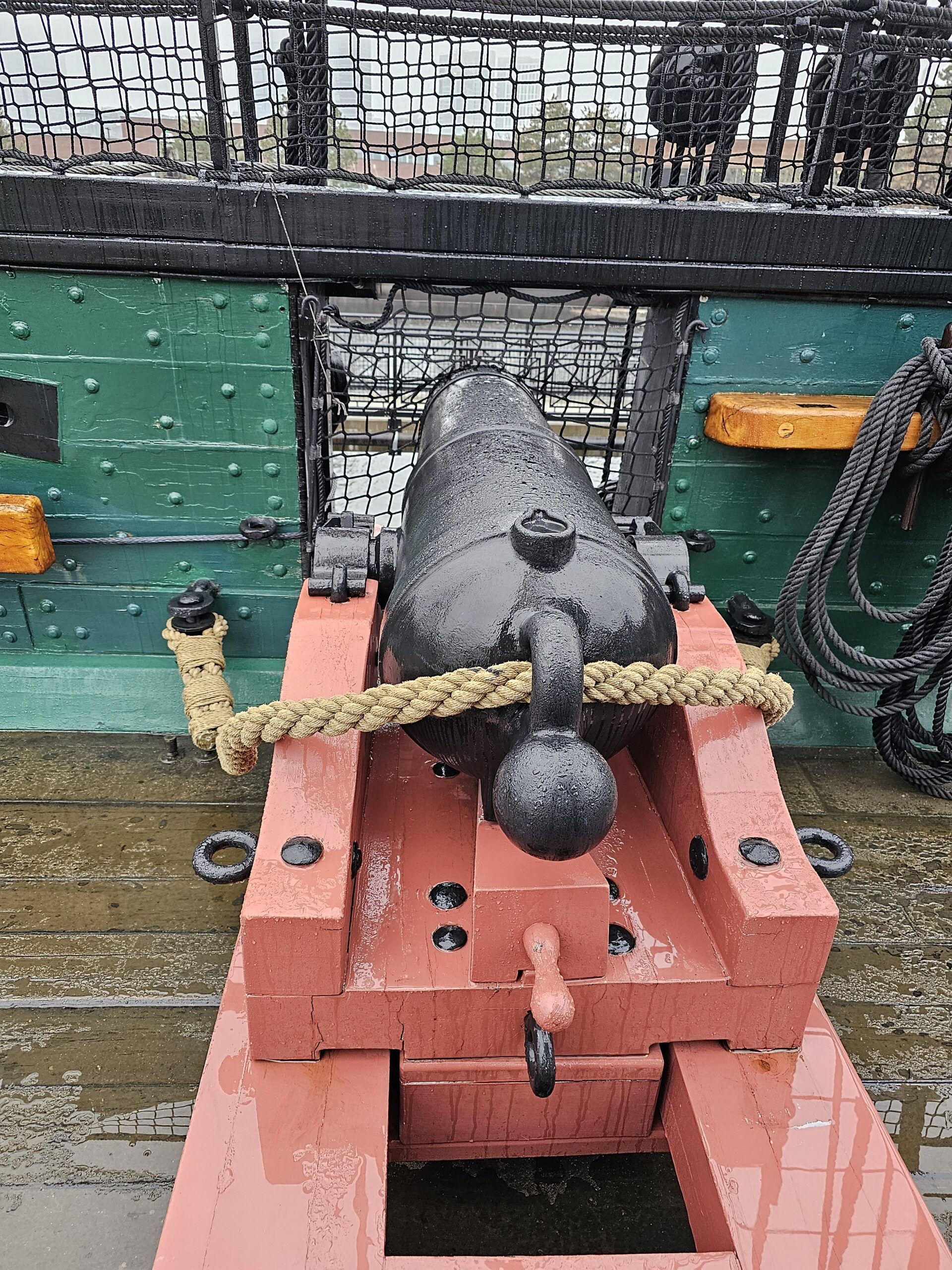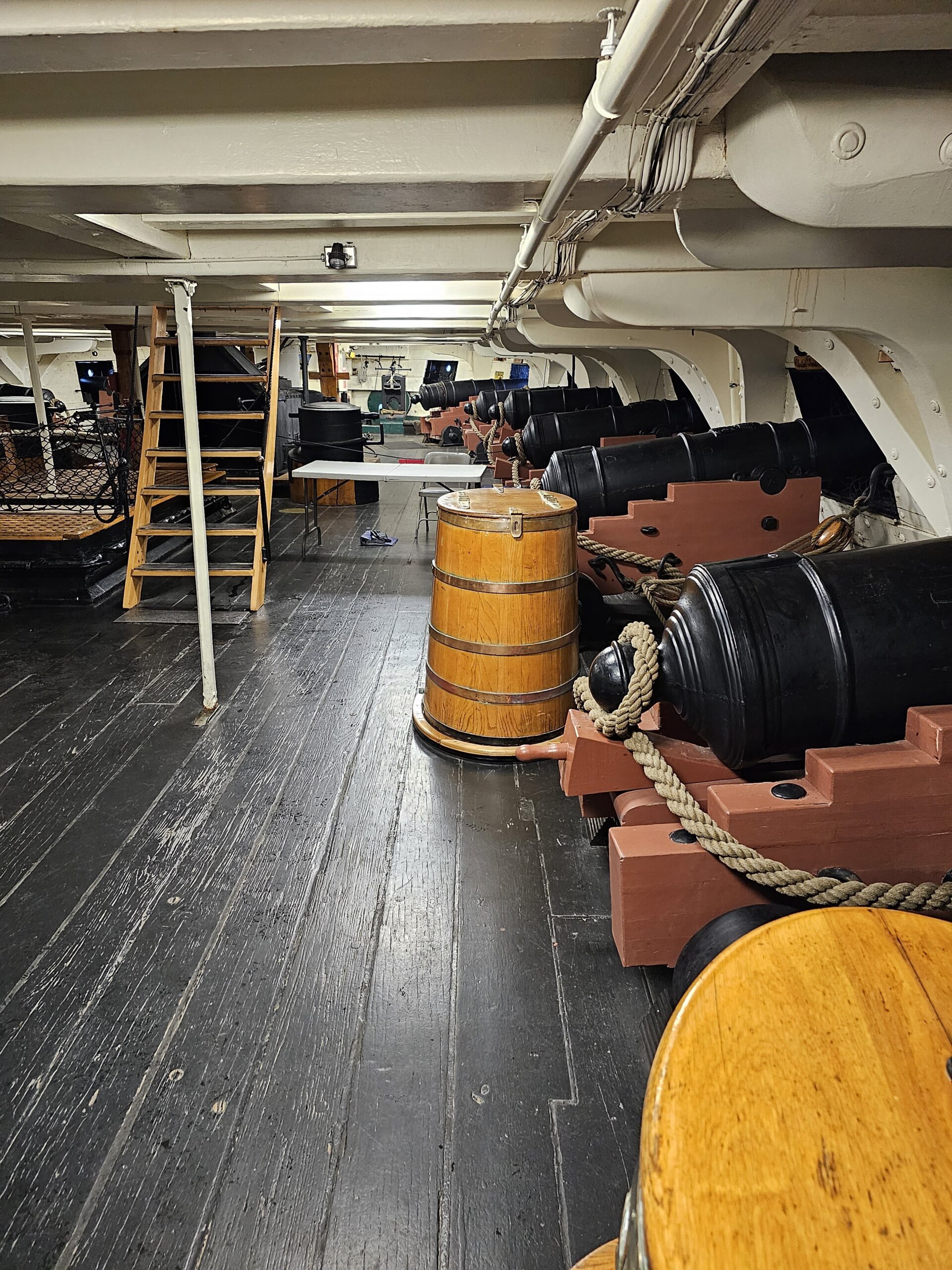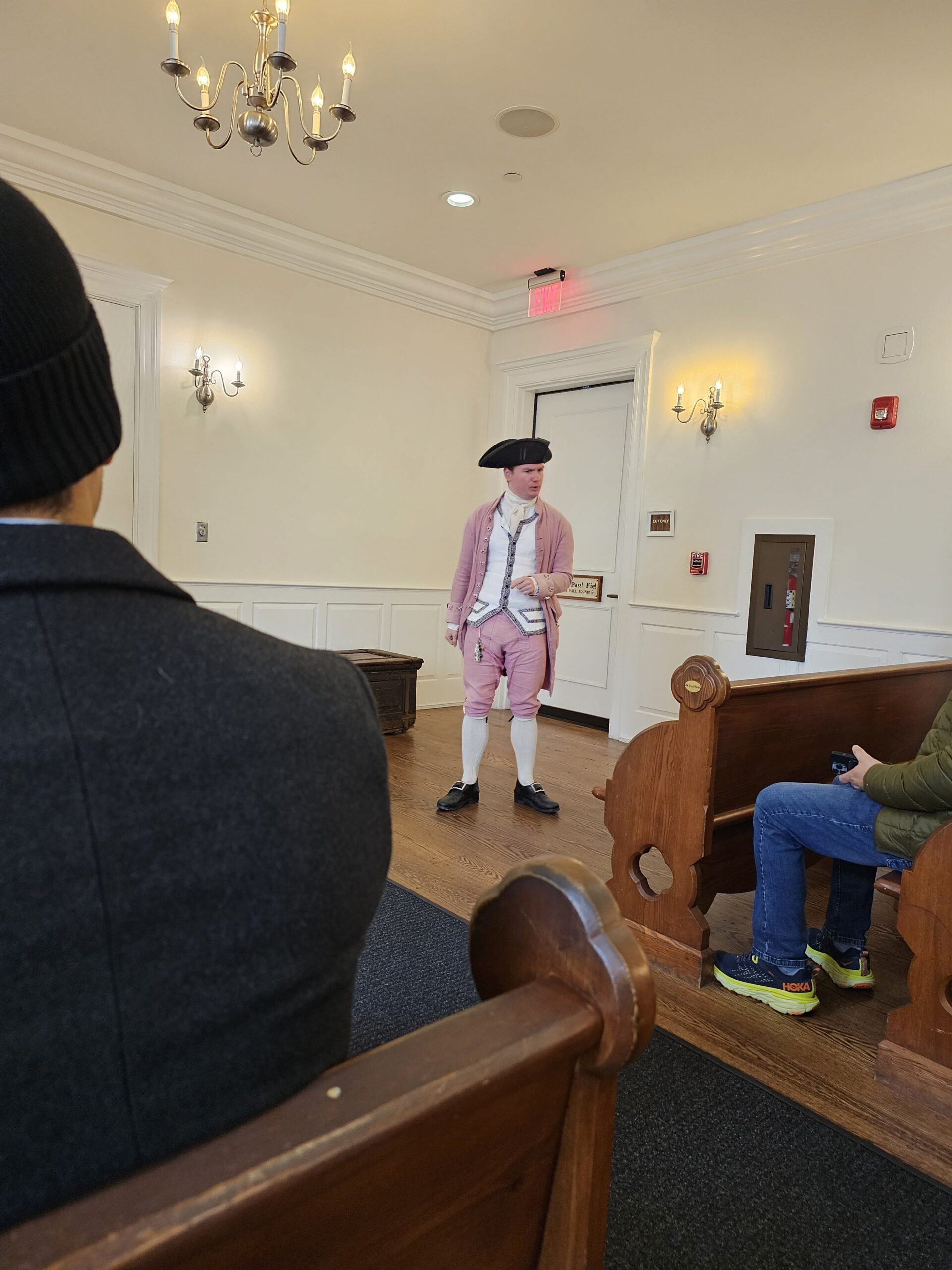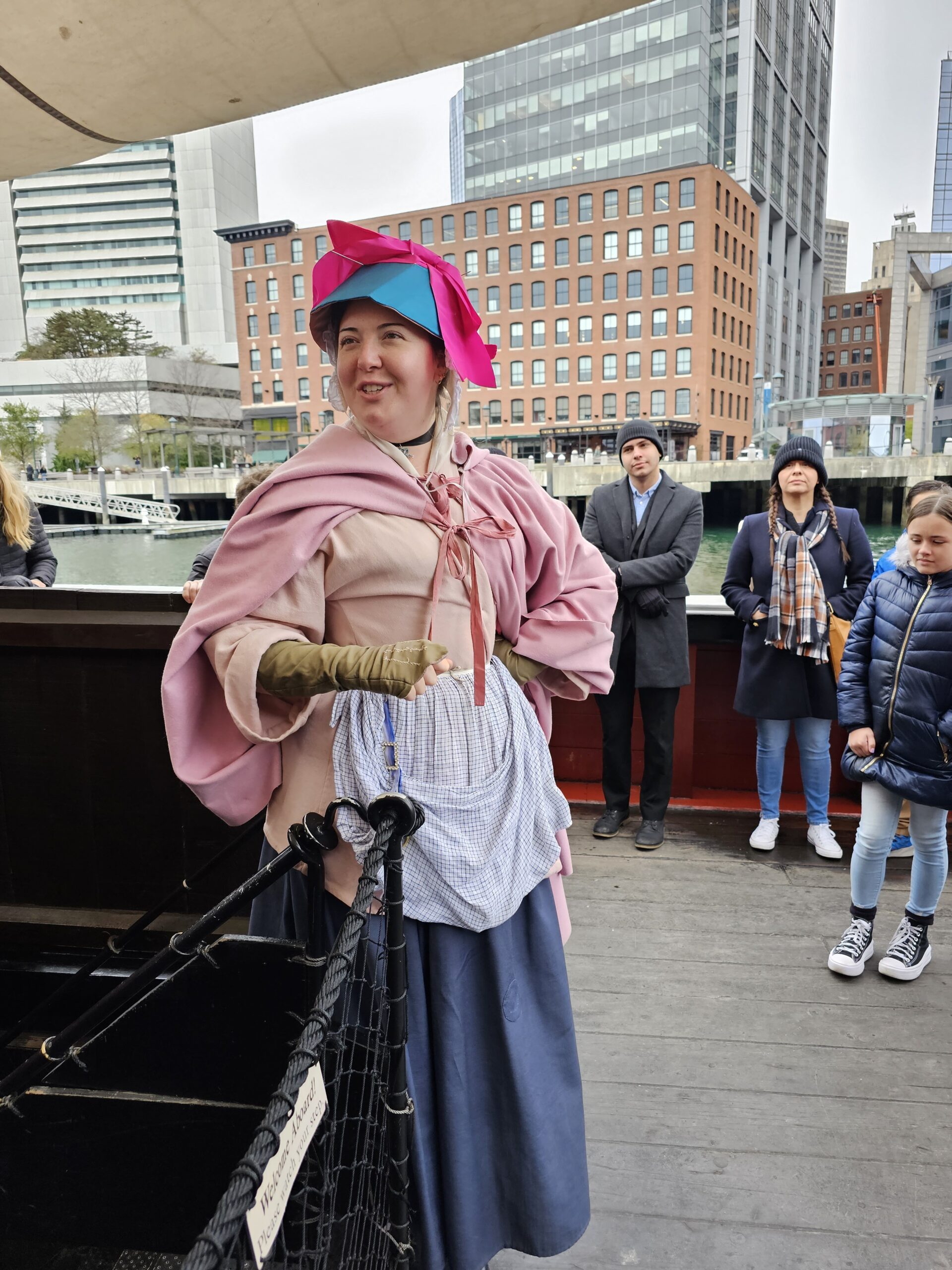We got an earlier start on our 2nd day in Boston, and committed to completing The Freedom Trail. We started where we left off the day prior, just outside Faneuil Hall, and made our way towards Paul Revere’s house. While on the route, our audio guide advised us of The New England Holocaust Memorial just across the street.
The memorial consists of 6 glass towers etched with the 6 million numbers for each person murdered during the Holocaust. The glass towers are meant to represent 6 different concentration camps where these murders took place. Each of the towers has stream rising from the floor, which is supposed to represent the smoke from the camp crematoriums. I found that last bit a tad morbid, but despite that it’s definitely worth a visit.
Back on The Freedom Trail, our next stop was Paul Revere’s house.
This is the view from inside the ticketed entrance. No photos are allowed inside, and there are guides stationed inside the house so I didn’t attempt any.
In the courtyard they have a bell that was cast by Paul Revere’s foundry in 1804, one of 27 bells known to still exist which were cast during Revere’s time running the business.
This statue of Paul Revere is in The Paul Revere Mall. The Old North Church is in the background. They really like Paul in this town!
The Old North Church lit the way for the American Revolution. On April 18th, 1775, Paul Revere arranged for lanterns to be displayed at the top of the church to advise which way the British were attacking. His instructions were “One if by land, and two if by sea”, which launched a network of riders to warn people that British troops had begun their march to Concord and Lexington.
The inside of the church is like nothing I’ve ever seen before. Instead of pews, the congregants had box seats, and they had to pay a pretty penny to get a good seat. We had never heard of this style of seating before, but according to one of the guides it was actually quite common back in the 1700’s.
This lantern is a replica of the ones used to spark Paul Revere’s ride, and has remained lit since President Ford first lit it during a Bicentennial service here in 1975. The two men who lit the original lanterns escaped from the church through the window behind the lantern, as British soldiers saw the lanterns and came to investigate.
This bust of George Washington has been in this spot since 1815. General Lafayette, the Frenchman who fought at Washington’s side during Valley Forge and the conclusive battle at Yorktown, visited the church in 1824, and remarked “Yes, that is the man I knew and more like him than any other portrait”.
Our next stop along The Freedom Trail was Copp’s Hill Burying Ground, the final resting place of merchants, artisans and craftsmen who lived in the North End. Copp’s Hill is a high point in the North End so the British soldiers used this spot to keep a watch for colonial troops. One tombstone in particular, Captain Daniel Malcolm’s, was used by the British for target practice, as we was a well known smuggler and a member of the Sons of Liberty.
Our next to last stop on The Freedom Trail is Bunker Hill, where the famous Battle of Bunker Hill was fought on June 17, 1775. While the British were able to take Bunker Hill from the colonial troops, they endured heavy losses, including many officers. This was a sobering experience for them, as they had felt that the colonial forces would be no match for the Redcoats. Unfortunately the monument on top of the hill is currently under refurbishment.
We ran out of time to visit the last stop on The Freedom Trail, so we took a rainy ferry ride the next morning to the last spot on The Freedom Trail, the USS Constitution. Launched in 1797, this is the oldest commissioned vessel still afloat in the world. It’s interesting to note that Paul Revere himself was involved in installing copper sheathing to the hull below the waterline.
You can tour the vessel, free of charge. The ship earned the nickname “Old Ironsides” during the War of 1812, when cannon balls were seen bouncing off the thick wooden hull of the ship. She defeated 5 British warships during that war.
During the American Civil War, the vessel served as a training ship for the United States Naval Academy. There remains a US Navy crew serving the vessel today, and they maintain the vessel and give tours. Below is a photo of all the different types of shot they would use in the cannons. Some were designed to damage a ships hull, while others were used to damage sails, masts and rigging.
You’ve gotta be careful walking below decks, as the overhead is barely more than 5 feet high. The barrel in the foreground is where they dispensed grog for the sailors.
Nearby the USS Constitution is the Massachusetts Korean War Memorial.
On our final day in Boston, we visited the Boston Tea Party Museum.
Costumed actors do their best to play up the event as it unfolded in 1773, complete with speeches and chants of “Huzzah”, and scornful hissing at those nasty Brits.
They take you aboard the full-scale replica ships that were involved in the tea party.
They also advise you that what you are about to do could be punishable by death, so keep it quiet. They then have the kids, and adults who are still kids, throw bundles of “tea” into the bay.
There is a plaque identifying all of the participants of the Boston Tea Party. More than I would have imagined!
Our guide shows us where Griffin’s Wharf was located back when the tea party took place. That space has since been filled in as Boston grew.
One last look at the replica Griffin’s Wharf before departing. Reminded me of something you’d see at Tom Sawyer’s Island in Disneyland.
We loved Boston, and would definitely like to return at some point, just no driving!! That’s it for this trip, and the blog will be going dark until after the holidays, when we have a trip planned to the Galapagos Islands! As always, thanks for reading, and Happy Holidays!
